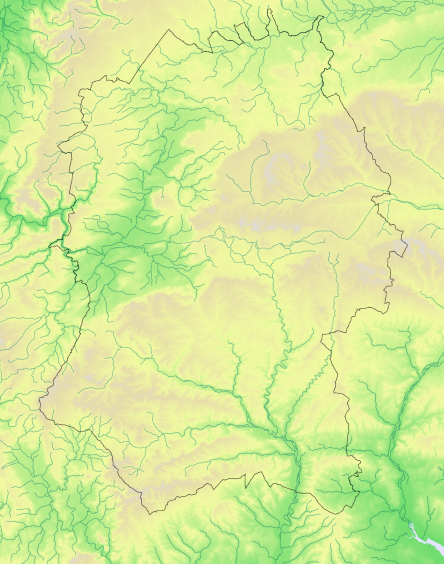Atlas species lists
- Breeding distribution 1995–2000
- Summer abundance 1995–2000
- Winter distribution 1995–2000
- Winter abundance 1995–2000
- Breeding distribution 2007–2012
- Summer abundance 2007–2012
- Winter distribution 2007–2012
- Winter abundance 2007–2012
- Breeding distribution change
- Summer abundance change
- Winter distribution change
- Winter abundance change
More Goldeneye maps
- Breeding distribution 1995–2000
- Summer abundance 1995–2000
- Winter distribution 1995–2000
- Winter abundance 1995–2000
- Breeding distribution 2007–2012
- Summer abundance 2007–2012
- Winter distribution 2007–2012
- Winter abundance 2007–2012
- Breeding distribution change
- Summer abundance change
- Winter distribution change
- Winter abundance change
Map explanation
This map shows the winter distribution of the species in Wiltshire as revealed by the fieldwork for Birds of Wiltshire (Wiltshire Ornithological Society 2007).
Key
Status
Nos tetrads

Present
3
1%

Not surveyed
Goldeneyes breed in a broad band across temperate latitudes of north-central Eurasia and North America. Large numbers from their Fenno-Scandian and Russian breeding grounds winter in Britain, and a scattering remain throughout the summer, though breeding is limited almost entirely to a few areas in northern Scotland. Bird Atlas 2007-2011 recorded a 28% reduction in wintering numbers in the UK compared with the figures in the 1981-84 Winter Atlas, thought to be due to a northeasterly shift in the core wintering range as a result of warmer winters.
In Wiltshire, Goldeneyes were rare winter visitors until the mid-1950s when they began to appear annually, first of all one to three at a time at up to three sites each winter, eventually appearing at some time or other at most major waterbodies. Usually numbers were limited to no more than one or two at a time, occasionally up to five or six, except at the Cotswold Water Park (CWP) where numbers increased from 15 in the early 1970s to 30-50 in most winters in the 1980s. Birds of Wiltshire recorded a peak CWP count of over 70 in the winter of 1998-99, but also a low of barely 30 in 1995-96. Such fluctuations continued into the new millennium with a low of 29 in 2007-08 contrasting with a maximum of 89 in 2012-13.
References
The following references are used throughout these species accounts, in the abbreviated form given in quotation marks:
“1968-72 Breeding Atlas” – Sharrack, J.T.R. 1976: The Atlas of Breeding Birds in Britain and Ireland. T. & A. Poyser
“1981-84 Winter Atlas” – Lack, P.C. 1986: The Atlas of Wintering Birds in Britain and Ireland. T. & A. Poyser
“1988-91 Breeding Atlas” – Gibbons, D.W., Reid, J.B. & Chapman, R.A. 1993: The New Atlas of Breeding Birds in Britain and Ireland 1988-91. T. & A. Poyser
“Birds of Wiltshire” – Ferguson-Lees, I.J. et al. 2007 : Birds of Wiltshire, published by the tetrad atlas group of the Wiltshire Ornithological Society after mapping fieldwork 1995-2000. Wiltshire Ornithological Society.
“Bird Atlas 2007-2011” – Balmer, D.E., Gillings, S., Caffrey, B.J., Swann, R.L., Downie, I.S. and Fuller, R.J. 2013: Bird Atlas 2007-2011: the Breeding and Wintering Birds of Britain and Ireland
“WTA2” – ("Wiltshire Tetrad Atlas 2 ") the present electronic publication, bringing together the Wiltshire data from “Birds of Wiltshire” and “Bird Atlas 2007-11”, together with data from further fieldwork carried out in 2011 and 2012.
"Hobby" - the annual bird report of the Wiltshire Ornithological Society.

